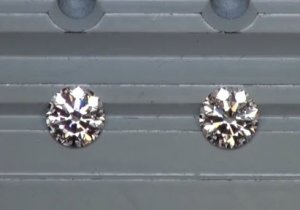I've put a diamond on hold. Would anyone care to comment on my selection? I'm having last minute doubts...
To me, this diamond looks like a good buy. Wanted to get a second opinion.
http://www.goodoldgold.com/diamond/10831/
It was listed for $7,300.
I'm sure its a rather subjective question, but given the my criteria ( 1CT, 'H' or higher, SI1 or higher, AGS0/GIA triple X) how does this diamond stack up?
This is my first diamond buying experience and so far I've learned a lot from this community, thanks again!
To me, this diamond looks like a good buy. Wanted to get a second opinion.
http://www.goodoldgold.com/diamond/10831/
It was listed for $7,300.
I'm sure its a rather subjective question, but given the my criteria ( 1CT, 'H' or higher, SI1 or higher, AGS0/GIA triple X) how does this diamond stack up?
This is my first diamond buying experience and so far I've learned a lot from this community, thanks again!






300x240.png)